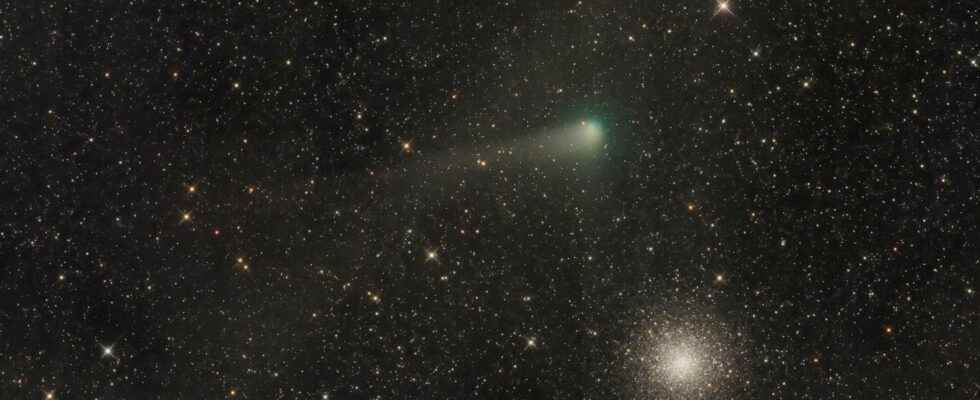After passing near the Earth last month, comet C/2017 K2 (PanStarrs) continues its path towards the Sun, to which it will be closest at the end of the year. In the meantime, for all amateurs and curious, the hairy star is currently observable in the constellation of Scorpio, not far from its claws.
You will also be interested
[EN VIDÉO] One minute to understand comet Bernardinelli-Bernstein The largest comet ever detected will soon cross the Solar System, its diameter reaches 100 kilometers!
When this comet was discovered in 2017 via the PanStarrs program in Hawaii, it was some 2.4 billion kilometers from us, between Saturn and Uranusi.e. 16 times the distance that separates the Earth from Sun (16 astronomical units) and yet she was already shining. That she shows herself as active at such a great distance from thestar which warms it, the Sun, surprised the astronomers who subsequently awarded it the palm of the farthest active comet ever observed.
Five years have passed and now C/2017 K2 (PanStarrs), as it is called, is in the inner Solar System. On July 14, it passed through our vicinity, some 270 million kilometers from Earth. Which is more than Mars (currently 163 million kilometers away). According to the latest observations ofHubblethe comet must have a core about 18 kilometers long, making it one of the largest ever observed — not as big as the incredible and gigantic Bernadelli-Bernstein which has a core some 100 kilometers in diameter! K2 is a very large piece of ice and dust which ridicules most of its congeners that we see passing, much more modest.
Where is the summer comet visible?
C/2017 K2 (PanStarrs) will reach the point of its orbit very elliptical closest to the Sun, the perihelion, on December 19, then passing 269 million kilometers from it — which is beyond the orbit of Mars, and reduces the chances that the comet will become very brilliant. Nevertheless many amateur astronomers and also happy curious people who own a telescope or a telescope — or know someone who has one –, try to observe it all this summer and follow, night after night, the evolution of its hair (coma) as well as its already impressive and expanding tails of gas and dust. The size of his coma, which forms like a ball of gas around its core, is estimated to be over 130,000 kilometers away, and its tail would stretch over 800,000 kilometers. Currently from a magnitude which approximates 8, C/2017 K2 (PanStarrs) is not visible to theeye naked but becomes detectable in a pair of binoculars. But you will have to wait for the Full moon passed by to take full advantage of it, without being embarrassed.
After crossing the constellation Serpentarius (Ophiuchus), the great comet now (August) wanders through Scorpius, well visible heading south at the start of the night. It approaches its two characteristic claws (see image above) and will pass near the two brightest stars in this part of theanatomy of the animal, namely Graffias on August 22, and Dschubba on August 30. Her brightness should continue to increase in the coming weeks as it warms. The forecasts count on a magnitude which should not exceed 8. But we may have surprises, as always with comets.
Interested in what you just read?
